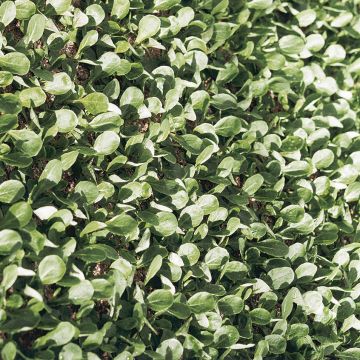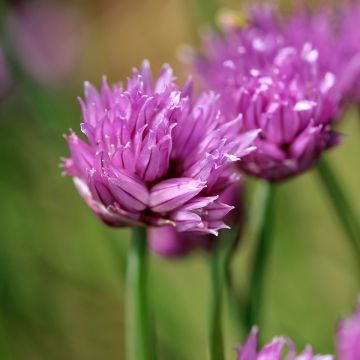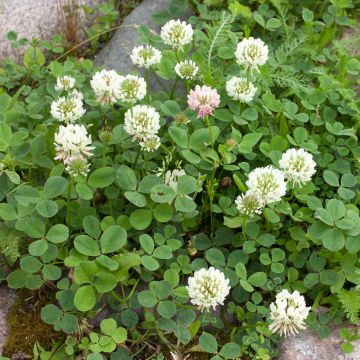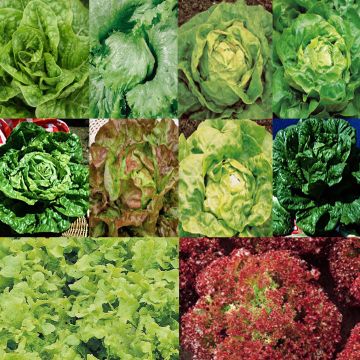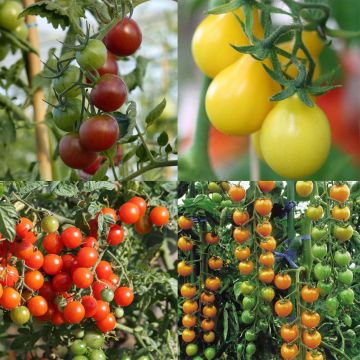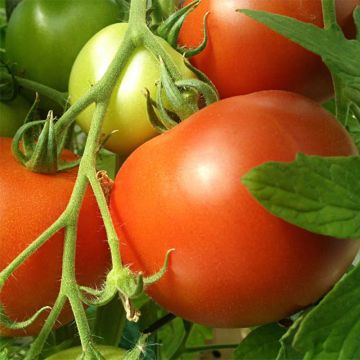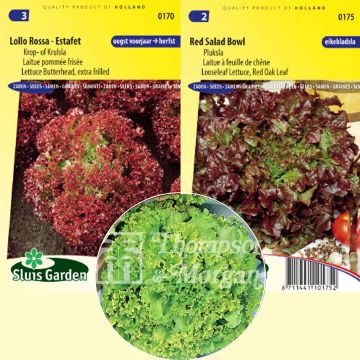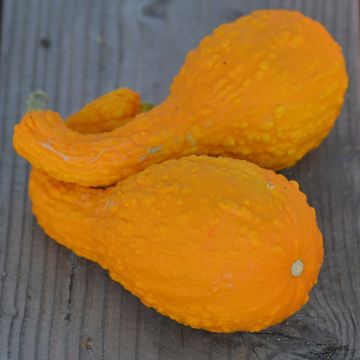
Sowing vegetable seeds
Where, When and How to Sow Vegetables?
Contents
Do you dream of harvesting your own fresh and tasty vegetables straight from your garden? Sowing vegetable seeds is an essential step to get your kitchen garden off to a good start. It’s a much more economical solution than buying ready-to-plant seedlings. It also gives you access to a wider range of varieties. This article guides you step by step to successful sowing, whether directly in the ground, in seed trays or in pots, depending on the type of vegetables you wish to grow. Follow our advice for a successful kitchen garden!
Where to sow vegetable seeds?
Vegetable seeds can be sown directly in the ground, in seed trays or pots.
Sowing directly in the ground is recommended for:
- Large seeds (beans, broad beans, peas…),
- Cold-resistant vegetables (lettuces, spinach…),
- Umbellifers and root vegetables (carrots, parsnips, fennel) which don’t tolerate transplanting,
- Small vegetables that would be very tedious to transplant (radishes, lamb’s lettuce, rocket).
Sowing in seed trays or pots is generally reserved for vegetables that require lots of warmth: done under heated cover (indoors, greenhouse), they allow you to get a head start.
This mainly concerns tomatoes, peppers, chillies, aubergines, melons, cucumbers, but also cabbages, leeks, squashes… Many vegetables can be sown this way and for beginners, it’s an easy method to obtain beautiful plants, less vulnerable to slugs and other pests.
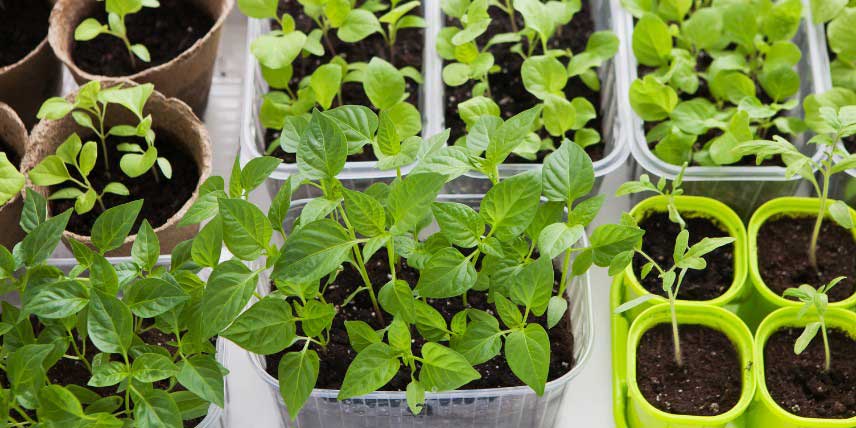
Young vegetable plants sown in pots or seed trays
When to sow?
The sowing periods are specific to each vegetable and each variety. They are usually indicated on the seed packets. This is important information that should always be checked.
Discover other Vegetable seeds
View all →Available in 1 sizes
Available in 1 sizes
Available in 1 sizes
Available in 1 sizes
Available in 1 sizes
Available in 1 sizes
Available in 1 sizes
Available in 1 sizes
Available in 1 sizes
How to sow vegetable seeds?
Direct Sowing in the Ground
- Start by preparing the soil: weed, loosen and rake to achieve fine soil. Ideally, the soil should already be warmed.
- Sow according to the recommendations for each vegetable (found on the packet), ensuring the correct sowing depth, spacing between rows, and spacing between seeds in the row.
- Cover the seeds with fine soil.
- Some sowings (carrots, radishes) require “tamping down”: gently press the soil with the flat side of a rake to secure the seeds properly.
- Water lightly with a fine spray to avoid displacing the seeds, then keep the soil moist until germination.
- Once the seedlings are well developed, thinning is often necessary: remove excess seedlings, keeping only the most vigorous ones. These can sometimes be transplanted elsewhere in the garden.
Also check out our guide: “Direct Sowing: Useful Tools and Accessories”
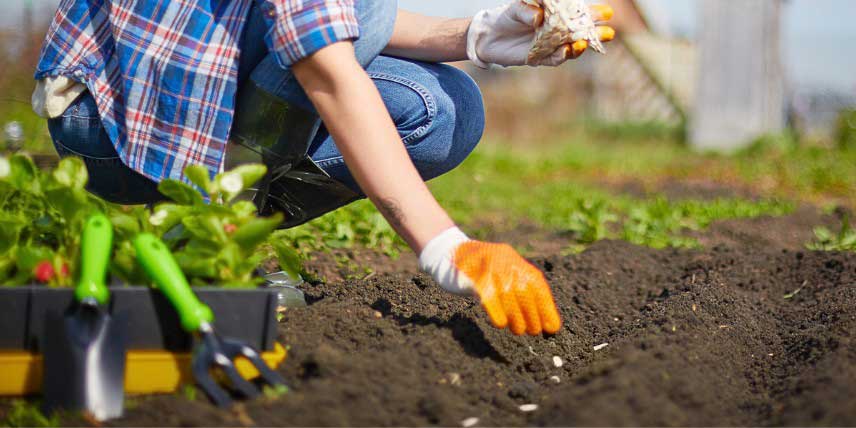
Sowing vegetable seeds directly in the ground, in a furrow
Sowing in Trays or Pots
Required materials:
- Seed trays or containers about 15 cm deep (small polystyrene boxes work well). You can also use pots or small containers. Ensure there are drainage holes to allow excess water to escape.
- Good-quality seed compost or a mix of 60% multi-purpose compost + 20% sieved compost + 20% sand or vermiculite.
- A spray bottle or watering can with a fine rose for gentle watering.
How to proceed:
- Fill trays or pots two-thirds full with compost, then lightly firm and level the surface.
- Moisten the growing medium.
- If sowing in trays, make shallow furrows, adjusting depth according to seed size, then sow thinly. If sowing in pots, place a few seeds in each. Later, thin to keep only the strongest seedling.
- Cover with a thin layer of compost.
- Water gently with a spray bottle to avoid displacing seeds.
- Trays can be covered with glass or plastic film to speed up germination. Ventilate regularly to prevent damping off.
- Depending on germination temperature, place trays or pots in a warm spot indoors, in a heated or unheated greenhouse, in good light to prevent leggy growth.
- Keep the growing medium moist but not waterlogged until germination, which usually takes 5–15 days depending on the vegetable.
- Once seedlings are well developed, thin if necessary, keeping only the strongest plants. Remove the glass cover at this stage.
- After a few more days, prick out seedlings from trays into pots, handling carefully to avoid damage, and let them grow further.
- Finally, about ten days before transplanting outdoors (once frost risk has passed), gradually acclimatise young plants to outdoor conditions by placing them outside for a few hours daily in good weather. Cooler temperatures and light breezes will help them toughen up for planting.
Explore our guides: “Sowing in Trays” and “Indoor Sowing: Useful Tools and Accessories”
You can also sow in Fertiss plugs: watch our video guide.
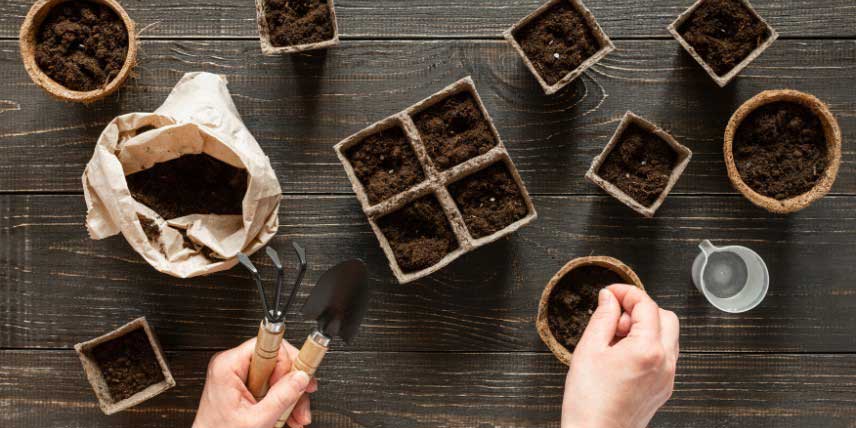
Sowing in pots. Depending on the vegetables you grow, you can also use trays or modular seed trays.
- Subscribe!
- Contents


































